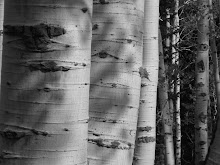We met an economics professor on the train who said that the system was pretty chaotic, but what was necessary to get private enterprise helping with the transporation system.
We got of the bus in Olesko and walked along a country road for about 15 minutes to get to the castle.
The first room told the story of Olesko through the centuries of building, rebuilding, change, disrepair and restoration. At one point in time a resident had found some valuables in a wall and had pretty much destroyed the castle looking for other goodies. The story is told in Ukrainian or Russian - not English. Nate worked hard translating for us.
We entered by walking up this ramp road shown in this model. The area spanned by the drawbridge has been filled in.
This is what you see as you approach the door.
The weight of the door runs on these metal tracks.
The well is just beyond that doorway area.
These are tiles from the Russian tile stoves that were the source of heat on winter days.
And this is a view toward the little town of Olesko
The castle is furnished with art and furniture from it's various eras. This table has a beautiful map on the top of it. One of the loveliest things I saw on the trip. The light and circumstances were not good for pictures but the picture to the left shows a bit of the map. On the left side of the table were places in Galicia (includes the area that is now Ukraine and Poland) and the right side shows places in the Middle east like Cairo, Alexandria and shown here Damascus. Jerusalem was at the center.
This is a woman after my own heart. She falls asleep reading.
Some of the sculptures have wood armatures and it looks like plaster over the top. To the left you can see some of the wood in gouged places on the arm of this one. Until you look more closely you think it is marble.
Below you can see what we think are the wood understructure of such sculptures















1 comment:
the spiral ramp up to the castle reminds me of some castles we saw in southern france. i love castles!
Post a Comment